Producers
-
Description:
Hacienda Monasterio has a special place in our hearts and cellars. Having remained at the vanguard of the evolution of the DO of Ribera del Duero since the property’s founding in 1991, Hacienda Monasterio continues to innovate and seek new ways to make wines that embody the region’s potential for power combined with elegance and finesse. Guiding this evolution is Peter Sisseck, who joined the estate shortly after its inception, and while he has pushed the envelope in the DO with his own wine Pingus, he’s remained at the helm of Hacienda Monasterio: overseeing the purchase and planting of new vineyards, grafting over existing vines to the local Tempranillo, Tinto Fino, and incrementally improving vinifications by championing native fermentations, experimenting with whole clusters and employing larger 500L French oak barrels for aging.
The results of these changes are evident in the wines. While retaining the complex aromatics that are a signature of this terroir – think orange peel and black olive tapenade, recent vintages have shown ever more elegance and precision. Wines that were once reticent and rewarding of some time in the cellar are immediately accessible and engaging. Recently Hacienda Monasterio has received some well earned praise from Luis Gutierrez who wrote in the Wine Advocate, “I tasted three breathtaking wines, starting with the 2011 Crianza which is, year in, year out, one of the best crianzas from Ribera del Duero.” It is a testament to the terroir of Hacienda Monasterio that throughout the evolution towards a more elegant style of winemaking, it still retains all of its power and intensity, deepened and enriched by greater finesse and complexity.
In most vintages Hacienda Monasterio makes two wines: a Crianza/Cosecha, and a Reserva. Occasionally the estate will have an exceptional vintage where the quality of the fruit is matched by its abundance and in such vintages Hacineda Monasterio will bottle a Reserva Especial.
All the wines at Hacienda Monasterio are primarily Tempranillo. The Reservas add a portion of Cabernet Sauvignon and are aged in 500 L French oak barrels for 20 months with about 60% of the barrels being new. The Crianza, in addition to Tempranillo and Cabernet Sauvignon includes small percentages of Merlot and Malbec. It is aged for a minimum of 12 months (more frequently closer to 18 months) in neutral French oak barrels.
The trend in the cellar towards larger barrels and a decrease in total quantity of new oak, is matched by a change in winemaking that incorporates a portion of whole clusters, native yeast fermentations and a more gentle maceration. Taken together, the new approaches to fermentation and aging are yielding wines with greater aromatic complexity, more transparent flavors and subtler tannins.
This profile and tasting notes were edited from the European Cellars website, along with the pictures used. For more information please visit: European Cellars.
Image: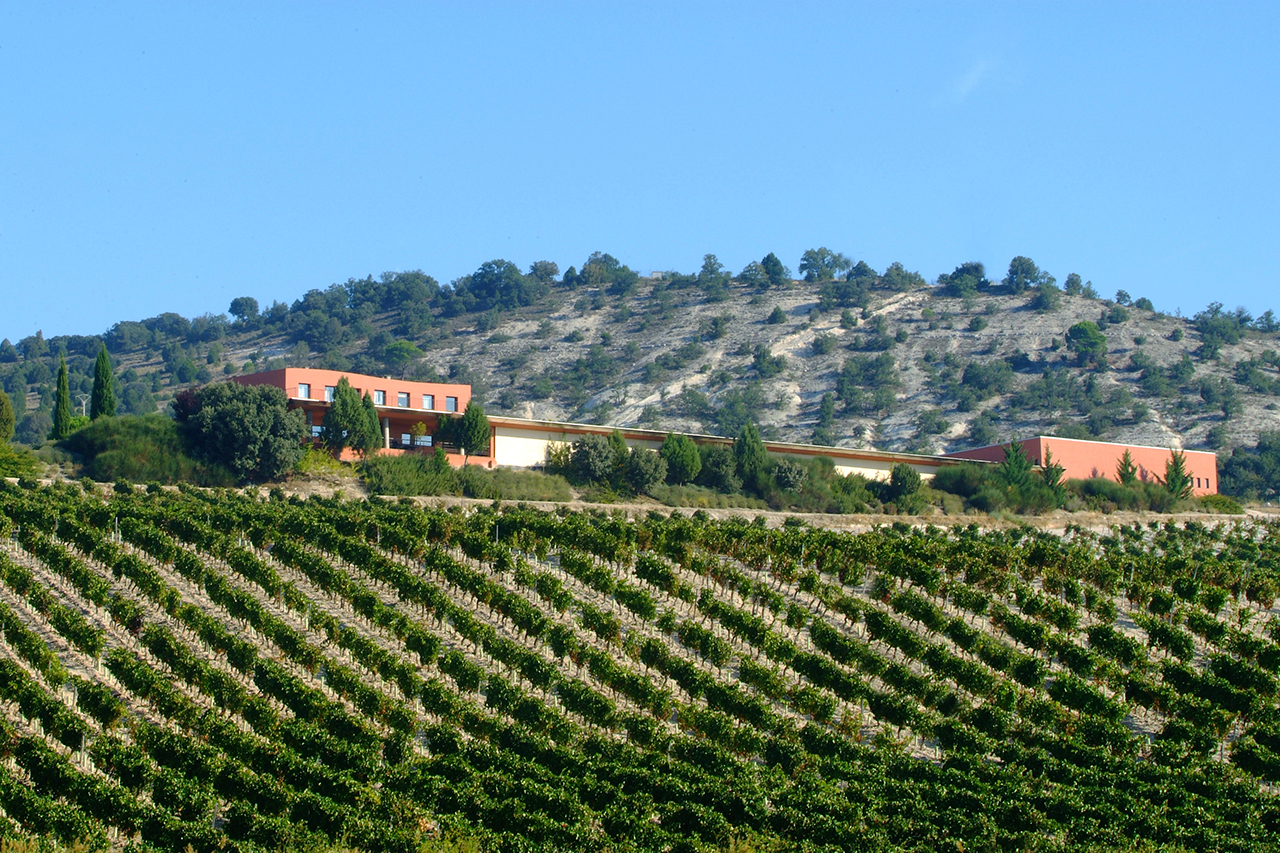 Region:
Region: -
Description:
Halarà (Χαλάρα) is Greek for "take it easy."
Stefano Amerighi
Francesco de Franco ('A Vita)
Nino Barraco (Barraco)
Corrado Dottori (La Distesa)
Giovanni Scarfone (Bonavita)
Francesco Ferreri (Tanca Nica)Six close friends, a who's who in the Italian natural (but territory-driven and clean) wine world. Their families have been vacationing together for years. Then they had the opportunity to buy a vineyard together, one that was going to be ripped out, the planting rights of which would probably have been sold to someone for a new vineyard in northern Italy. So they saved this vineyard, in Contrada Abbadessa in Marsala, which is planted ad alberello to roughly 80% Parpato and 20% Catarratto, 40-year-old vines. Parpato, also called Quattro Rappe, is one of those forgotten grapes...it was thought to be a local biotype of Grenache but it seems now is more similar to Carignan. Anyway, it's adapted to this territory over the centuries and behaves like itself.
The project is about this vineyard, a celebration of Mediterranean-ness. Marsala is essentially the dead-center point of the Mediterranean. Halarà is also about a spirit of collaboration between six winemakers with their own estates to run, spread between Sicily, Pantelleria, Calabria, Tuscany, and Le Marche.
Though the vineyard is in Marsala (the place), they are not making Marsala (the wine). For now, three wines...a rosato, a rosso, and, eventually-con calma-halarà, a bianco. Fresh, energetic, and belying the hot, arid climate of Western Sicily.
2019 was their first vintage.
"What is the Mediterranean? A thousand things together. Not a landscape, but innumerable landscapes. Not a sea, but a succession of seas. Not a civilization, but a series of cilivizations stacked upon one another." -Fernand Braudel
Image: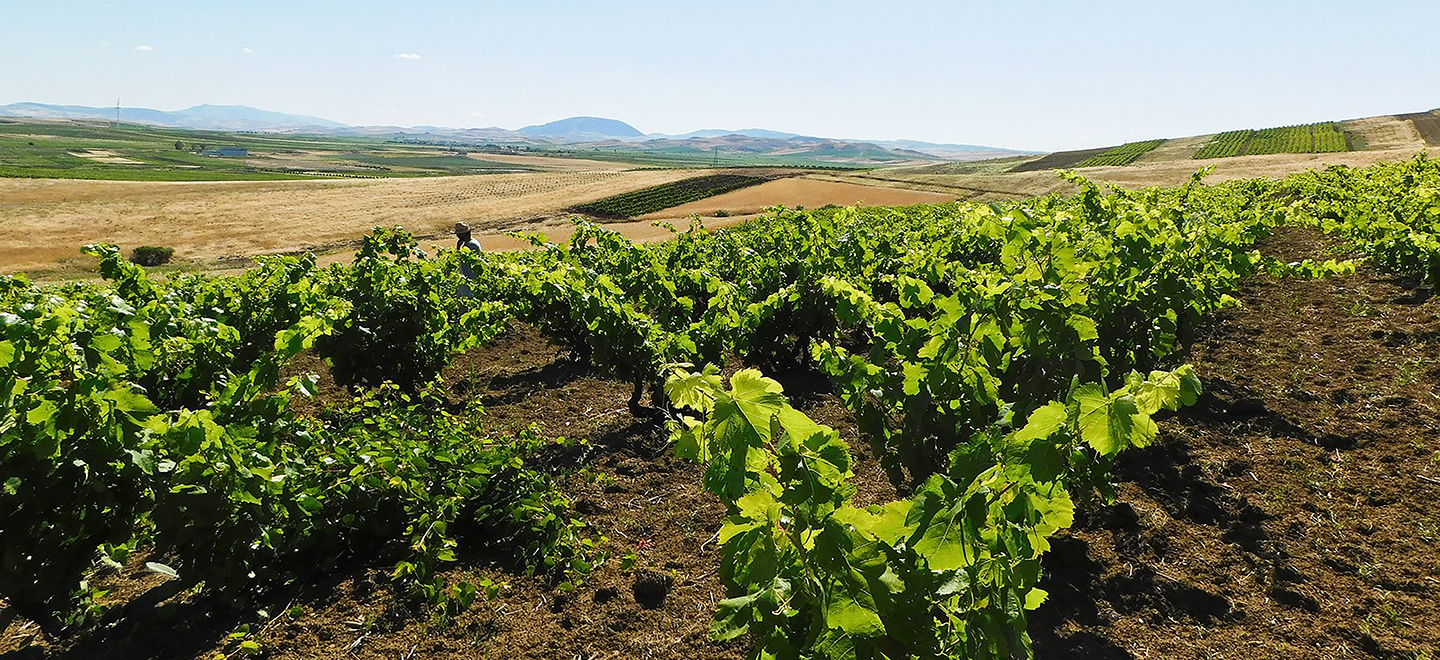 Region:
Region: -
Description:
Hamacher Wines is a classic example of how we choose wineries to work with at Bowler: Samples are sent to the office, the bottles are popped in the afternoon, and a few of us taste and discuss. Everyone agrees that the wines are very good, and a great fit for our portfolio, but we have too many producers in our book, and the reps are already overwhelmed by the number of wines to sell. So, we make the difficult decision to pass. That evening, David Bowler brings the samples home, and in the middle of a glass of one of the wines (Bieze Vineyard in Hamacher's case), he has an epiphany and emails the winemaker letting them know we changed our minds and want to work together. Great wine is hard to pass up, especially in DB's case.
Eric Hamacher got the wine bug in the 80s while studying biochemistry and food science at U.C. Davis. His wine journey that followed led him to California working for Mondavi, Chalone, and Etude, but the cool climate and unchartered territory of Oregon eventually stole his heart. In 1995, he moved up to the Willamette Valley and started Hamacher Wines. In 2002, after having bounced around winemaking facilities for seven years, Eric founded the Carlton Winemakers Studio where he would make his wines for the next decade. Finally, in 2014 he moved his operation into the old Ponzi facility thanks to a connection he had made – his wife Luisa Ponzi.
Eric’s winemaking is old-world in style without ignoring the fact that he is making wine in the new world. Seeking elegance and texture, he harvests on the earlier side, ferments with natural yeasts at cool temperatures, and ages the wines in mostly neutral barrels. His production has been around 2000 cases per year and has been that way since he started the winery. Eric’s wines are deliciously classic Oregon, and showcase the terroir of the Willamette Valley beautifully.Image: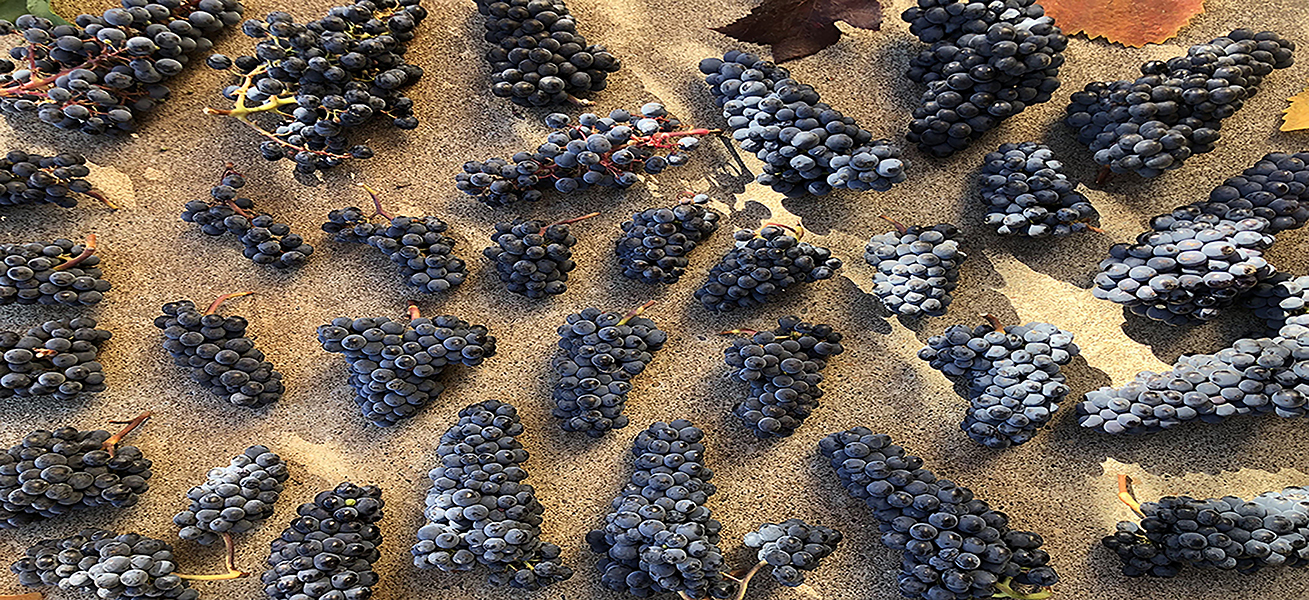 Region:
Region: -
Description:
Maria Harm and her husband Andreas started in 2010 with some prime vineyards in the Wachau, Durnsteiner Hollerin and Kellerberg and the Wachtberg vineyard in the Kremstal. The wines impressed us immediately for their transparency of terroir and the obvious focus on balance over power. The Harm wines have lighter alcohol and at the same time, do not compromise on ripe fruit. Each wine carries its village and vineyard name, but because the winery itself is located outside of the Wachau (just over the border in the Kremstal), the winery cannot be a part of the Vinea Wachau, and so they do not use the designations of Steinfeder, Federspiel, or Smaragd. For them, it also does not make sense to wait to pick because you want to make a Smaragd wine and need a certain level of alcohol, again the primary goal is the expression of terroir and elegance.
Harm has ten hectares of vines, nearly evenly split between the Kremstal and the Wachau. Looking out over the vineyards from a very steep hillside on the Danube, Maria described the Wachau as “a paradise lost.” It’s normal in the Wachau to see bare ground or dry, herbicide-treated grass in most of the vineyards. In the Harm vineyards, you see a lot of bright green grass, wild flowers, and vibrant, healthy vines. As far as treatments go, they are using low amounts of copper sulfate and various plant extracts (in 2017, they followed biodynamic principles and are certified by Demeter in 2019). In one vineyard in the Kremstal they have planted a vegetable garden with different heirloom tomato varieties, cucumbers, peppers, herbs and garlic. In the Wachau, Maria and Andreas have apricot and peach trees as well as almond trees between the Riesling vines. “For us”, Maria said, “organic viticulture is the understanding of processes in the vineyard’s ecosystem and interaction with these natural circumstances. Andreas’ knowledge (PhD in organic agriculture) as an oeno-scientist and consultant in organic viticulture are an indispensible instrument in this context. In his view, the vineyards are biospheres, which must be protected and supported. Through our work we can observe the return of endangered species, such as the bee-eater [a bird that’s been adversely affected by commercial farming].” It’s the same with newly-acquired old vineyards, which must carefully be re-cultivated to preserve the enormous potential of the old vines.
Minimalism is the obvious concept in the cellar. During the harvest, a fastidious selection of the grapes guarantees perfect initial conditions for spontaneous fermentation which can last from three weeks to eight months. The pressed grapes “go their way”; during the fermentation, they are very patient and they trust in the energy of their grapes and natural yeasts. A very long yeast contact is important for the character of the Harm wines, and they are mainly bottled after at least one-year aging period in the tanks or wooden barrels. Andreas Harm explained to us that because the fermentations last so long, the wines can be quite shy when they are first bottled and really express their terroir best after having some time in the bottle. In that vain, there is not a rush to have the freshest, youngest vintage as is often the case for Austrian wine.
It’s tremendous to find such an exciting winery that has remained relatively unknown. The wines have a great complexity and a purity of terroir, emphasizing elegance over power.
Image: Region:
Region: -
Description:
The Hitier-Buffeteau family has been running Château Haut-Dambert for three generations; Jean-Luc Buffeteau, also an oenologist, is now taking care of the domaine. They have 30-hectares located in two villages, ten hectares in Castelnieu and 20 hectares in Gornac. Gornac is in the Haut-Benauge, which is considered one of the most complex areas for whites in the Entre-deux-Mers.
In the vineyards, the Sauvignon Blanc, Sauvignon Gris and Muscadelle are planted at 4,500 vines per hectare, well above the minimum of 3,300 vines per hectare. The vines grow on hillsides at 80 to 130 meters elevation and the limestone soil gives complexity to the wines. Buffeteaux is very conscientious about products that they use on vines; about 70% of treatments are organic or biocontrol products. They do use some synthetic treatments as needed, but they mostly use sulfur for oidium/mildew. Because of careful farming, the winery has reduced its treatments by 40% in three years.
Haut-Dambert is one of the first to go back to working with Sauvignon Gris in their white Entre-deux-Mers; 25% of the blend is Sauvignon Gris, 60% is Sauvignon Blanc, and 15% is Muscadelle. Sauvignon Gris is less acidic than Sauvignon Blanc and it is round, giving a nice balance with the Sauvignon Blanc which is aromatic and has a notable high acidity. Muscadelle is fruity and floral, but with some age it can give notes of gun powder. The Haut-Dambert wines are compelling and balanced, offering incredible value for so-called ‘entry-level’ Bordeaux.
BOWLER E-Zine Issue 4 | January 2022: HVE – Qu’est-ce que c’est?
Image: Region:
Region: -
Description:
Charles Magnien is the twelfth generation at his family’s domaine in Gevrey Chambertin. They have six hectares of vines, mostly in Gevrey in some key parcels, Ruchottes, Lavaut Saint Jacques, Cazetiers, and Champeaux. The famous vineyards garner the attention, but equally as rich as the land is the old vines. In 1850, the family discovered a mutation of Pinot Noir, which was named after the family, Pinot Magnien. The Pinot Magnien is a part of the blend in their Gevrey-Chambertin Vieilles Vignes cuvee where the oldest vines are 100 years-old. Charles took over from his father in 2009 and immediately invested his energy and efforts in the vineyards where he is working with a higher canopy. He is following organic agriculture, but will treat if necessary. Charles Magnien is the first in his family to bottle all of the wine that they grow and now with more than ten vintages under his belt, the Henri Magnien wines are quickly becoming recognized as some of the best in the village.
Image: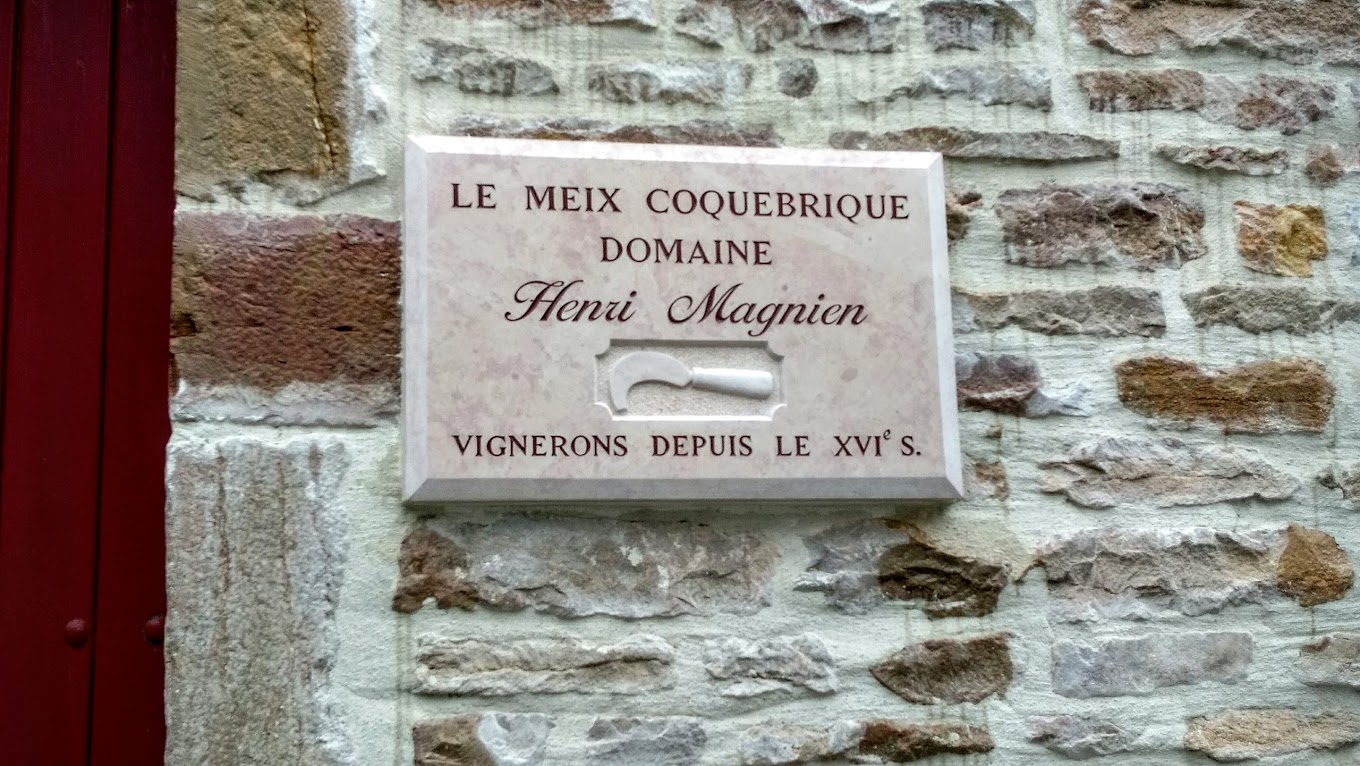 Region:
Region: -
Description:
Christoph Hoch is the twelth generation, since 1640, to make wine in his town of Hollenburg, on the south side of the Danube. Historically, vines were planted on this side of the Danube and the north side was for food crops. In 2013, Hoch split from his parents winery, starting with five hectares that would have been his inheritence eventually. Today Hoch has 12 hectares total, all in Hollenburg, and all farmed biodynamically and certified by Demeter. The subsoil is Hollenburger conglomerate, which was formed by the Traisental and Danube rivers crashing together and compacting the chalk with the river stones. The chalk is equally as active as the Côte des Blancs in Champagne, bringing minerals to the vines. This similarity in soil inspired Christoph to make sparkling wine. Although, the source of chalk is completely different, in Hollenburg it's from the Alps and in Champagne it's maritime chalk, or what is called muschelkalk in German.
Throughout all of Hoch’s vineyards, you find a mix of mustard, rye, and phacelia. He considers all of his parcels by four categories: dry, chalky, nutrient rich, or holds water. Depending on the category, he will plant the herbs and grains accordingly. Mustard brings sulfur to the soil, which protects the plants and transfers it naturally to the wines, so that he can use as little as possible at bottling. Rye brings carbon to the soil. He knocks it down after it has grown and it creates a natural humus. The carbon from the rye works with the phacelia and creates nitrogen. Hoch is constantly innovating and makes his own compost to use in his vineyards. He also works with the wine school in Krems, hosting workshops to teach about biodynamic farming.
Christoph has mostly Grüner Veltliner planted, along with Riesling, Zweigelt, Weissburgunder, Blauer Portugesier, and Muskat Ottonel. He studies his terroir and after discovering the Hollenburger conglomerate is high in active limestone, giving wines with a high acidity, he had the idea to focus on sparkling wine, which represents 75% of his production. He doesn't simply want to make 'good' wine, his main goal is to make a wine that inspires emotion, hopefully enthusiasm for the wine itself, but he is okay with clear rejection as well. To do this, he wants to make wines traditionally, maximizing the terroir – this means spontaneous fermentation in wooden barrels (oak and acacia) some on the skins and some racked. All of the wine is aged in barrel (all used) and he treats each barrel as its own project. Hoch has six different cellars in Hollenburger for aging his wines each has it's own distinctions; one is a bit warmer, and the wines all go through malo (naturally) and other cellars are cooler and the wines mostly do not go through malo. Fermentations happen naturally and slowly in neutral barrels. He now has wine in the cellar spanning several vintages. He feels that limiting a wine to a single vintage does not show the best of the terroir expression and most of his wines are non-vintage, with a dominant base year and previous vintages blended in.
Hoch's still wines are always a blend of three vintages and the pet-nats are two vintages. Generally, for the still wines, the most recent vintage is 30% of the blend, 50% is from two vintages ago, and 20% is three years old. This gives a completely different perspective on terroir. Naturally, wines from some areas are more structured or tannic and they benefit the blend by having time to mellow a bit. The youngest wine is normally the fruitiest and approachable. It's a completely unique way of highlighting the Hollenburger conglomerate soil over vintage. The Hoch wines are very original and are some of the best representations of the ‘new’ wines of Austria. It takes a lot of courage to push the boundaries of the classic Austrian-style and pushing boundaries brings a certain amount of risk. Hoch has created something new and maybe it’s not in the classic Kremstal fashion and outside of the appellation regulations, but it’s certainly exciting to try a wine without limits. Christoph Hoch has an infectious enthusiasm and that energy comes through in the wines.
BOWLER E-Zine Issue 1 | Q4 2020: Austria - Two Newbies from Hoch
BOWLER E-Zine Issue 4 | January 2022: Compost Cookery with Foradori, Hoch, Bucklin, and Podere Giardino
Image: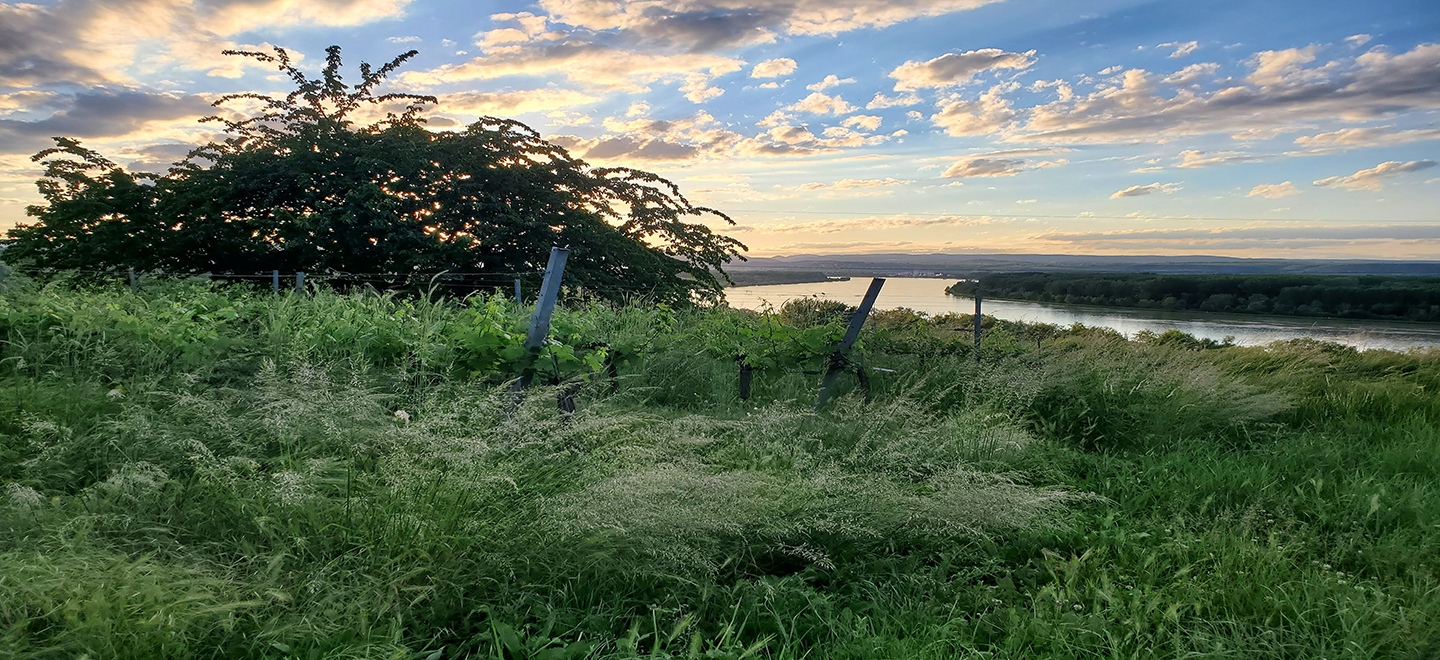 Region:
Region: -
Description:
Champagne Hugues Godmé is a small grower located in the Grand Cru village, Verzenay, in the northern Montagne de Reims. They own a total of seven and a half hectares that cover four villages in the north and east of the Grand Montagne and west in the Petite Montagne: Verzenay, Verzy, Villers Marmery, and Ville-Dommange. Verzenay and Verzy are two of the most famous villages for Pinot Noir in the Grand Montagne, the others being Bouzy and Ambonnay. Verzy and Verzenay sit on north facing slopes and have a completely different expression compared to Bouzy and Ambonnay, which face south. Liem, in his book, Champagne, describes the wines of Verzenay and Verzy as, “sleek in shape, thriving as much on finesse as on body. While they can be concentrated in their ripeness, they are rarely opulent, retaining a firm structure and prominent acidity even in the warmest vintages. In contrast to the luscious red-fruit flavors of Bouzy and Ambonnay, the wines from this part of the Montagne de Reims are slimmer, more acidic, and more structured.” Villers Marmery is on the east side and is mostly planted to Chardonnay. And Ville-Dommange is in the west and planted to Meunier. Overall, the winery has three hectares of Chardonnay, 2.80 hectares of Pinot Noir and 1.80 hectares of Meunier.
We met with Lucille Godmé in April 2022 and she shared that her father, Hugues, made the decision to follow biodynamic farming twenty years ago after noticing that his skin was becoming irritated from contact with the chemicals, which raised concerns about the impact these chemical treatments might be having on his overall health. It took time to make the transition; in 2006 they began to farm organically becoming certified organic in 2013. Biodynamic certification came the following year in 2014. Their vines average 30 years-old and the oldest are more 60 years-old. Since making the change to biodynamic farming, the vineyards are healthier and more resistant to disease and today Godmé is a part of the biodynamic winegrowers association, Biodyvin.
In the cellar, they work with spontaneous fermentations in neutral oak and enamel-lined cement tanks. They move juice by gravity to retain fresh aromas and each parcel is vinified separately to respect each terroir. The top wines are vinified directly in the barrel. Malolactic fermentation happens sometimes and there are no efforts to stop or encourage it. The second fermentation happens in their cellar carved out of chalk right below one of their vineyards in Verzenay.
Their main wine is the"Les Terres d`Unions" Premier Cru Extra Brut NV which comes from all four villages. They also make a signature Blanc de Noirs that comes from Verzenay and Verzy and another cuvee called “Montagne de Nord” that comes from the oldest vines and is aged mostly in oak, four years longer than the Extra Brut. Liem describes the “Montagne de Nord” as, “an elegantly assertive wine, anchored by a deeply resonant chalkiness.”In addition to bottling a vintage Champagne, they make a very limited amount of three single-vineyard wines, one from each variety. The wines are bottled with no dosage or Extra Brut (less than 6g/L). The average production per year is 4,100 cases. We are thrilled to welcome the Godmé family to the Bowler portfolio. The wines truly represent the unique terroir of the northern slopes of the Montagne de Reims.
Image: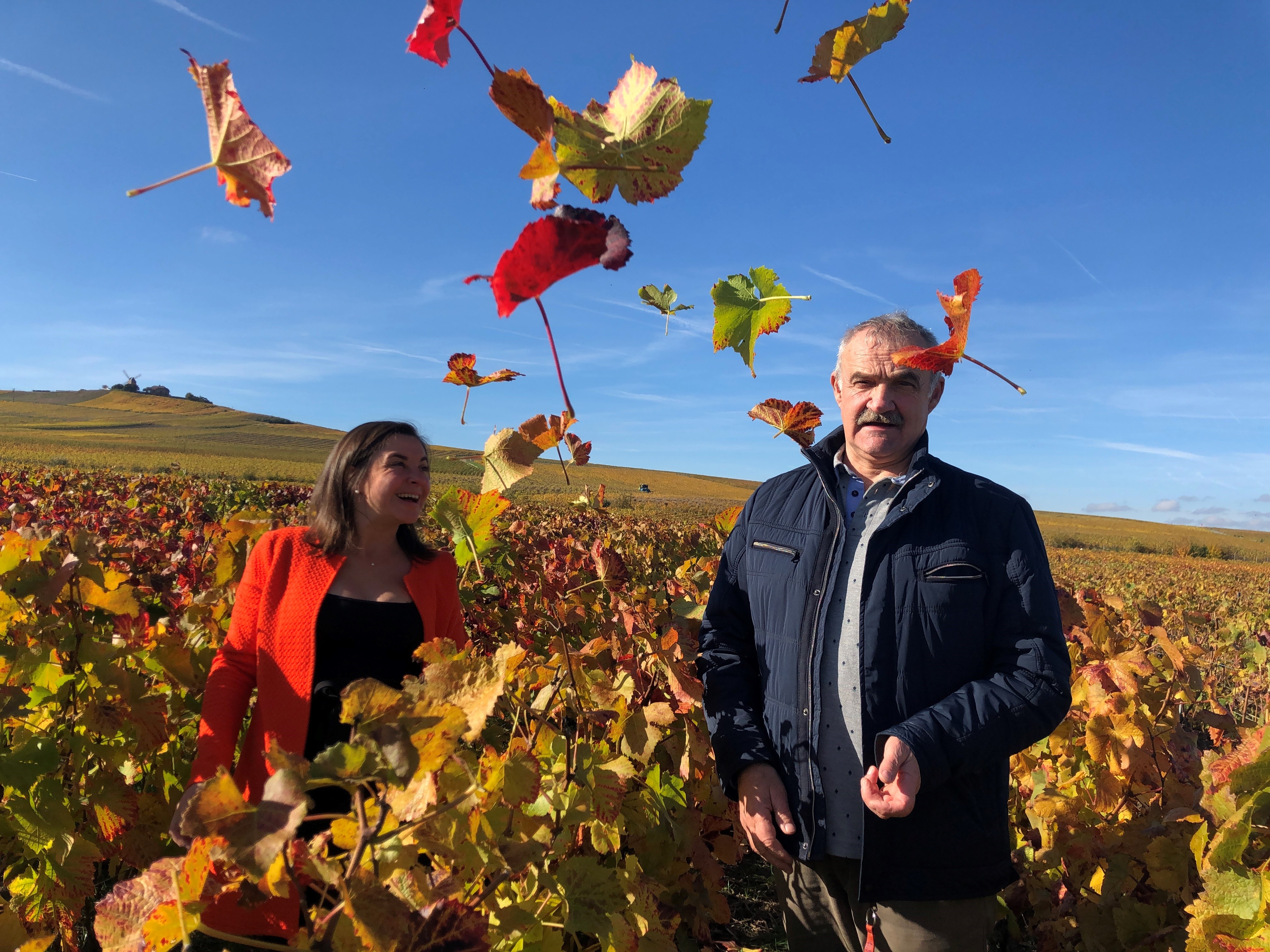 Region:
Region: -
Description:
ilBioSelvatico is a young winery in Civitella in Val di Chiana, near Arezzo. Owner Filippo Volpi was born and bred in the area and comes from a family of restauranteurs. He caught the food and wine bug early on. As a teenager in the 1980s, he had already completed his sommelier course and had done formative stages in kitchens in Italy and France. His career brought him to cook at some of the most important restaurants of the era-- Vissani (Gianfranco Vissani), Trigabolo di Argenta (Igles Corelli and others), Pierre Gagnard, L’Arpège (Alain Passard). Along the way, he never lost track of wine. The front of house/back of house duality, and the division of attention between Italy and France, have served him well. Today he is considered one of Italy’s preeminent connoisseurs of Burgundy.
Filippo’s friends Federico Staderini and Stefano Amerighi encouraged him to stop selling grapes from his 4.2-hectare Sangiovese vineyard, which he first rented from and eventually bought from his father. The vineyard has been farmed organically since the late 1990s and these days is farmed biodynamically (with no desire for certification). It’s a fresh, windy site, with sandy clay topsoils. A gentle incline leads to the surrounding woods, a bit like in the Côte d’Or. On paper, it’s rather homogenous, with 15-30-year-old vines, all planted to one selection of Sangiovese. In practice, however, Filippo discovered lots of variation and nuance. He insists that it is not a “grand terroir,” but it is an intact ecosystem, capable of creating something highly original, provided he has the right sensibility.
For ilBioSelvatico, Filippo is inspired by early-1950s Burgundy “à l’ancienne,” both in the vineyard and cellar. He does a preliminary pruning selection in January/February, then a final one under a favorable moon in March, to push budbreak past the threat of frosts. He doesn’t do green harvest, nor does he top the vines, preferring to eventually roll and tie the highest canes together. Treatments are infrequent and limited to copper/sulfur, stinging nettles, algae, and citrus zest extracts. Once veraison begins he will hardly step in the vineyard until the first harvest. Harvest is protracted over a month, with 25 to 30 separate pickings happening from early September to mid-October. No analysis is done, but Filippo and his four-person crew look for the “best of the best” by taste on any given harvest day. They’ll only harvest in the morning, for four hours max, in order to bring in around 5,000 kg of grapes at a time.
In the cellar, much as it would have been in 1950s Burgundy, there is no crusher or destemmer or temperature control. All grapes are kept 100% whole cluster, vinified in open-top 500L tonneaux. A little more than half of the grapes are foot-tread and the rest of the bunches are left untouched in infusion. Once separated from the skins, the wines begin their aging in these same tonneaux before being moved to concrete vats. It’s a “gourmet cuisine” approach that took Filippo some time, experience, and courage to develop; he did not release his first three vintages, 2015, 2016, and 2017. The 2018 we have on offer is the commericial debut of ilBioSelvatico.
Image: Region:
Region: -
Description:
We are very excited to be working with Gernot Kollmann, one of the most watched winemakers in Germany. After working at Van Volxem and then making the Knebel wines in 2008, Gernot had the opportunity (with partners) to purchase the historic estate of Immich-Batterieberg.
The Immich family history in the Mosel dates back to the Middle Ages, when a Prince von Esch possessed the 12th-century building. Located in the center of Enkirch, the original section of the castle, Escheburg, is named after him. The Immich family would own the estate for over 500 years (1425–1989). In the mid-19th century, Carl August Immich needed more cultivable land on which to plant vines. His holdings included the Enkirch hillside, which was less a hillside and more a steep cliff face of solid stone; using sprengbatterien (a battery of explosives filled with gunpowder) from 1841 to 1845, he reduced the site to rubble, which not only made it cultivable but also gave the vineyard its name, Batterieberg (“demolition hill”). The estate's name refers to this site.
The estate consists of 13 ha. Holdings include 1.1 ha of the best parcels in the Batterieberg (grand cru in grey slate + quartzit), as well as parcels in the great vineyards of Ellergrub (grand cru in blue slate), Steffensberg (1er cru in red slate) and Zeppwingert (grand cru in grey slate + quartzit). All of these sites contain parcels of very old, ungrafted, pre-phylloxera vines--a genuine treasure trove of vine material almost unknown elsewhere in Germany. The Escheburg is a dry Riesling, firm and impressive, made from a blend of ungrafted vines from Steffensberg, Ellergrub and Batterieberg. It represents an astonishing value. Batterieberg is located within the larger Zeppwingert, which along with Ellergrub and Steffensberg were among the highest-ranked vineyards according to the 1897 Mosel-Weinbau-Karte, the Prussian viticultural tax map of the Mosel. Gernot's most recent acquisition in 2014 was a small, dizzyingly steep site in neighboring Traben called the Zollturm ("toll tower") which he uses partly for his Sekt and partly for a grand cru cuvee named for the site. The wines are all produced dry in a combination of used casks and stainless steel with full fermentations, ambient yeasts and nothing added to the wines except a low amount of sulfur. The wines are therefore natural and vegan. They are also compellingly vibrant, long-lived in the cellar, and most profoundly terroir-driven.
Immich-Batterieberg has been practicing organic viticulture for ten years and will certify for the first time in 2022.
Image: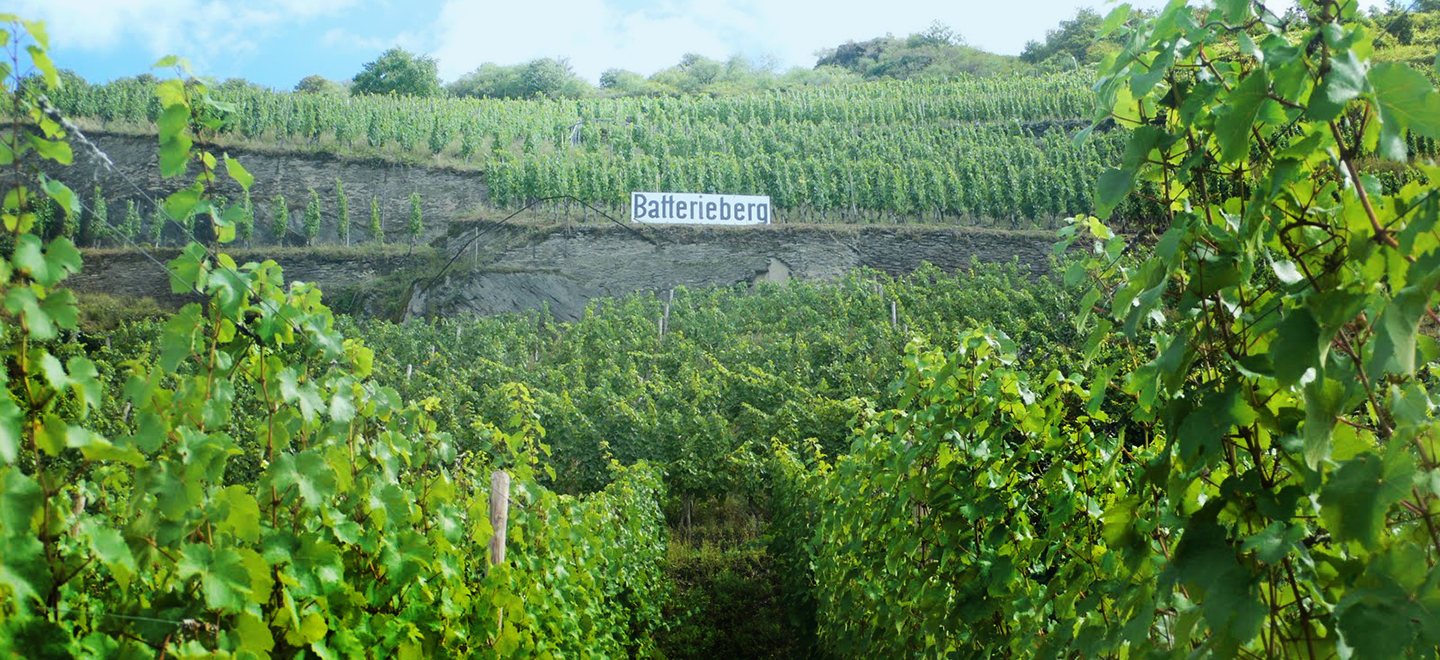 Region:
Region: